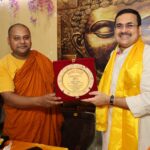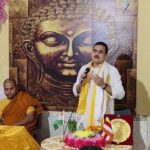NEW EDUCATION CAN DRAW ON OUR HISTORY
- By : Anirban Ganguly
- Category : Articles
India’s struggle for independence had been witness to some of the most interesting thoughts on education being articulated and experimented with, vigorously
Perhaps no other country’s struggle for independence saw such a robust and rich parallel education movement as did India’s from the 1890s to the late 1930s. Throughout this vast stretch of struggle filled decades, the zeal and the aspiration for developing a national system of education for India never flagged, was never abandoned nor did it cease to attract the energies of some of the leading minds of our struggle for liberation.
In between this vast swathe of decades, India and India’s struggle for freedom witnessed some of the most interesting thoughts on education being articulated and experimented with. By the time Swami Vivekananda appeared on the Indian scene with his exhortations of education and nationalism, Swami Dayananda Saraswati had already evolved a framework of education. Swami Dayananda’s educational philosophy and framework would be among the foundational inspiring experiments that would influence the quest for a national system of education for India.
While the 1890s saw Swami Vivekananda’s famous articulations on the false aims and debilitating effects of the colonial education system it also witnessed the beginning of Acharya Satish Chandra Mukherjee’s (1865-1948) Dawn Society. In the next decade and a half, Satish Mukherjee’s Dawn Society would emerge as one of the leading vehicles for the new education thought and debate in India.
“Foreign education”, complained Satish Mukherjee in the pages of the Dawn Magazine in February 1898, “has not enabled us to be self-reliant, self-dependent, self-sacrificing, patriotic.” Such a condition had to be actively arrested and reversed.”Must we still stand by with folded hands until the doom of extinction overtakes us?” asked Satish Chandra.
TheDawn rapidly became a principal voice of education articulation in India and for years together yielded space to some of the most enriching educational debates in the country. It provided a platform to a wide array of nationalists and enabled them to take up the cause of Indian education. It succeeded in forming an academic nucleus which turned into the first batch of instructors of the Bengal National College which was one of the earliest expressions of the effort at national education.
The early years of the last century saw heightened activity on the education front. Every front ranking leader of the political movement articulated thoughts on education. Between 1901 and 1902, Bipin Chandra Pal, in a detailed series on the problems of Indian education in the pages of his New India, discussed the education challenge facing India. Similarly, Sri Aurobindo in the pages of his Bande Mataramand Karmayogin and later in the Arya vigorously discussed the dimensions of a new education for India.
Sister Nivedita, in a series, ‘Hints on National Education in India’, spoke of the future of India being dependent on education and of how it was necessary to build up “this idea of the sacred duty of giving education to the people as one of the elements of our civilisation”. Lala Lajpat Rai’s, ‘The Problem of National Education in India’ brought out still other dimensions of the educational debate, while Lokmanya Tilak’s simple yet direct discussion of national education stirred the minds of the masses along the west coast and galvanised them into forming some of the most active national education institutions.
The effort for national education was not only confined to Bengal, Gijubhai Badheka’s Divasvapna in Gujarat and its advocacy of ‘Baladevo Bhava’, the child is to be worshipped — and ought to be the centre of educational planning — if a new education, which aspires to be in consonance with the Indian civilisational spirit, was to be eventually evolved wielded a deep influence on Indian education thinking.
The Basic Education proposal formulated in 1937 became among the final attempts at evolving a responsive indigenous education framework for an independent India.
It is hoped that the proposed new education policy draws from this rich and varied repository of our educational thought in its effort at imagining a true education for India.

















